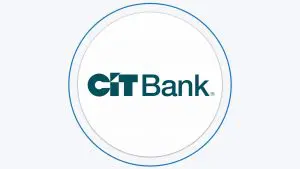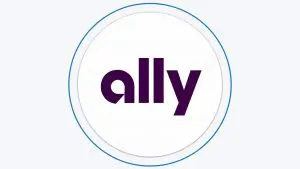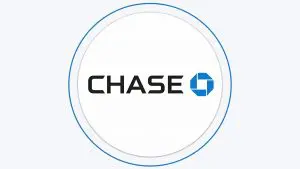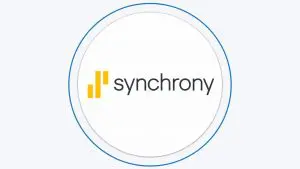Table Of Content
What Is An Automatic Savings Plan?
An Automatic Savings Plan is a financial tool that enables individuals to save a fixed amount of money on a regular basis without the need for manual intervention.
With an automatic savings plan, individuals set up an automated transfer of a fixed amount of money from their checking account to their savings account, investment account, or other savings vehicles on a regular basis, such as weekly, bi-weekly, or monthly. This is often done through direct deposit or an electronic funds transfer (EFT).
The key benefit of an Automatic Savings Plan is that it helps individuals establish a regular savings habit without requiring much effort or discipline. It also helps to reduce the temptation to spend money that would otherwise be available in a checking account.
Automatic savings plans can be set up with various financial institutions, including banks, credit unions, brokerage firms, and online investment platforms. Some employers also offer automatic savings plans as part of their employee benefits program, allowing employees to set aside a portion of their paycheck for savings automatically.

How Do I Set Up Automatic Savings?
Setting up automatic savings is a great way to make saving money easier and more consistent. Here are the steps you can follow to set up automatic savings:
1. Determine Your Savings Goal
Before setting up automatic savings, it's important to have a savings goal in mind. This could be a specific amount of money you want to save, or a percentage of your income. Having a clear goal will help you determine how much to save and how often to save it.
2. Choose A Savings Account
Next, you'll need to choose a savings account to use for your automatic savings plan. Look for a savings account with a competitive interest rate and low fees.
Consider how easy it is to access your savings account. You may want to choose an account that allows you to transfer money easily and quickly, whether through online banking or a mobile app.
Some savings accounts offer additional benefits, such as rewards programs, ATM fee reimbursements, or the ability to link multiple accounts.
3. Select The Payments Frequency
This step involves deciding how often you want to transfer money from your checking account to your savings account. You may want to transfer money on a weekly, bi-weekly, or monthly basis, depending on your financial goals and how often you receive income.
You can also consider aligning your automatic transfer with your pay schedule, so that you save money immediately after receiving your paycheck.
4. Set Up Automatic Transfers
Once you have decided on the frequency of your automatic savings, you will need to set up the automatic transfer. You can usually do this through your bank or financial institution's online banking platform or mobile app.
Simply go to the section for transfers and set up a recurring transfer from your checking account to your savings account. You will need to enter the amount, frequency, and start date of the transfer.
After you set up the automatic transfer, the money will be moved from your checking account to your savings account automatically, according to the frequency you have chosen.
How To Automatically Deposit Money From Paycheck To Savings
If you want to dedicate a portion of your salary towards savings, you'll need to update the direct deposit form, in a similar way you did it when you initially filed it.
Most direct deposit forms have the ability to split the amount between checking and savings. Talk to your employer to make the necessary changes.
After you set up the automatic transfer, the money will be moved from your paycheck to both checking accounts to your savings account automatically, according to the rules you have chosen in your direct deposit form.
5. Monitor Your Progress
Don't forget to Check your savings account regularly to track your progress towards your savings goal. You can adjust your transfer frequency or savings goal if needed.
Pros and Cons Of Using An Automatic Savings Plan
While there are many advantages to using an Automatic Savings Plan, there are also some potential disadvantages to be aware of. Here's a summary of the pros and cons of using an automatic savings:
Pros | Cons |
|---|---|
Easy And Convenient
| Missed Opportunities |
Helps You Stay On Track | Overdraft Fees |
Can Earn Interest
| Limited Flexibility |
Reduces The Temptation To Spend
|
- Easy And Convenient
Setting up an Automatic Savings Plan is easy and convenient.
Once you set up your automatic transfers, you don't have to think about saving money again – it happens automatically.
- Helps You Stay On Track
With an Automatic Savings Plan, you can set a savings goal and a regular transfer amount.
This can help you stay on track with your savings goals and make progress towards them.
- Can Earn Interest
Depending on the type of savings account you use, you may be able to earn interest on your savings. This can help your money grow even faster.
- Reduces The Temptation To Spend
By moving your money to a separate savings account, you reduce the temptation to spend it on other things. This can help you reach your savings goals more quickly.
- Limited Flexibility
With an Automatic Savings Plan, you'll be transferring a fixed amount of money at a regular frequency.
This can limit your flexibility to adjust your savings plan as your needs change.
- Overdraft Fees
If you don't have enough money in your checking account to cover the automatic transfer, you may be charged an overdraft fee.
To avoid this, it's important to ensure that you have enough money in your account to cover the transfer.
- Missed Opportunities
If you're automatically transferring money to a savings account, you may miss out on other investment opportunities that could potentially provide a higher return.
When Automatic Savings Plan May Be A Good Idea?
An Automatic Savings Plan may be a good idea in several situations:
When you're trying to establish a savings habit: If you're having trouble saving money on a regular basis, an Automatic Savings Plan can be a great way to establish a savings habit. By setting up automatic transfers, you don't have to think about saving money – it happens automatically.
When you have a specific savings goal: If you have a specific savings goal in mind, such as saving for a down payment on a house or a new car, an Automatic Savings Plan can help you stay on track. You can set a regular transfer amount and track your progress towards your goal.
When you have a variable income: If you have a variable income, it can be difficult to know how much to save each month. With an Automatic Savings Plan, you can set a percentage of your income to save, which can help you build up your savings even if your income varies.
When you want to reduce the temptation to spend: If you find yourself spending money that you intended to save, an Automatic Savings Plan can help you reduce the temptation to spend. By automatically transferring money to a separate savings account, you'll have less money available to spend on discretionary expenses.

When Automatic Savings Plan May Not Be A Good Idea?
While an Automatic Savings Plan can be a great tool for building up your savings, it may not be a good idea in some situations. Here are a few examples:
When you have high-interest debt: If you have high-interest debt, such as credit card debt or a personal loan, it's usually better to pay off the debt before focusing on savings. The interest you're paying on the debt is likely higher than the interest you'll earn on your savings, so it doesn't make sense to save money while you're still carrying high-interest debt.
When you need more flexibility: If you need more flexibility with your savings, an Automatic Savings Plan may not be the best choice. With automatic transfers, you're committing to a fixed transfer amount at a regular frequency. If you need to adjust your savings plan, it can be difficult to do so with an automatic transfer.
When you're already meeting your savings goals: If you're already meeting your savings goals without an Automatic Savings Plan, there may not be a need to set one up. You don't want to automate your savings if it's unnecessary or if it will cause you to save too much and leave you without enough money to cover your expenses.
In general, an Automatic Savings Plan may not be a good idea if you have high-interest debt, or if you need more flexibility with your savings plan.
Top Offers From Our Partners
Which Banks Offer Automatic Savings Tools?
Many banks offer Automatic Savings tools to help their customers save money on a regular basis. While most banks focus on recurring payments to savings, there are plans who can help you save also when doing day to day activities such as using a debit card.
Here are a few examples:
Ally Bank: Ally Bank offers a program called “Surprise Savings”, which automatically transfers money from your checking account to your savings account based on your spending patterns.
Chase Bank: Chase Bank offers a program called “Automatic Savings Program”, which allows you to set up automatic transfers from your checking account to your savings account on a regular basis.
- Bank of America: Bank of America offers a program called “Keep the Change”, which rounds up your debit card purchases to the nearest dollar and transfers the difference to your savings account.
Citibank: Citibank offers “Auto Save” savings tool, which allows you to set up automatic transfers from your checking account to your savings account on a regular basis.
Wells Fargo: Wells Fargo offers “Save As You Go” if you use the Platinum savings or the Way2save savings account, which automatically transfers $1 from your checking account to your savings account every time you make a qualifying debit card purchase.
These are just a few examples of banks that offer Automatic Savings tools. Many other banks and credit unions offer similar programs to help their customers save money automatically. It's a good idea to check with your own bank to see what types of Automatic Savings tools they offer


















